Picture this: the sun beats down on the vast, rust-red outback, where the land seems empty and silent. But hidden beneath the surface lies a dazzling secret — ancient bones and shells transformed into shimmering gems, sparkling with colors that seem almost otherworldly. In Australia, fossils aren’t just remnants of the past; they are encased in opal, turning prehistoric creatures into nature’s rarest jewelry. This isn’t just science — it’s a story of time, beauty, and a land that holds treasures beyond imagination.
The Land Down Under: A Fossil Hunter’s Dream
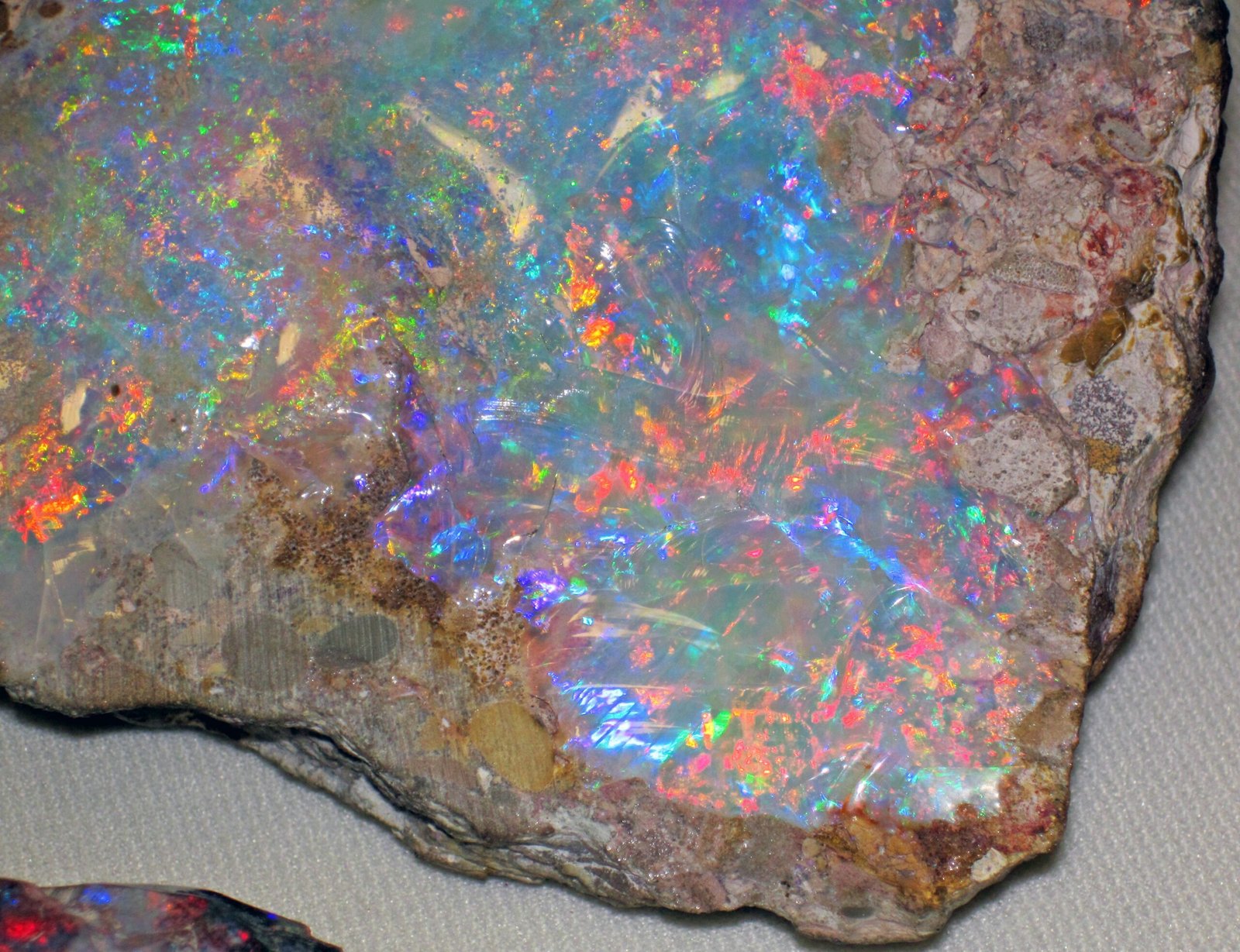
Australia is a land of extremes, and its ancient history is written in stone and sand. Over millions of years, the continent’s shifting climate created the perfect stage for fossilization. Instead of the typical brown bones seen elsewhere, Australian fossils sometimes dazzle with a rainbow of colors, thanks to a unique geological twist. The dry, arid landscapes of places like Lightning Ridge and Coober Pedy have preserved prehistoric secrets in a way no other place on Earth has managed, making Australia a magnet for paleontologists and treasure hunters alike. These regions are now famous not only for their fossils but also for their opals, drawing people from around the world to explore their mysteries.
What Makes Opal So Special?
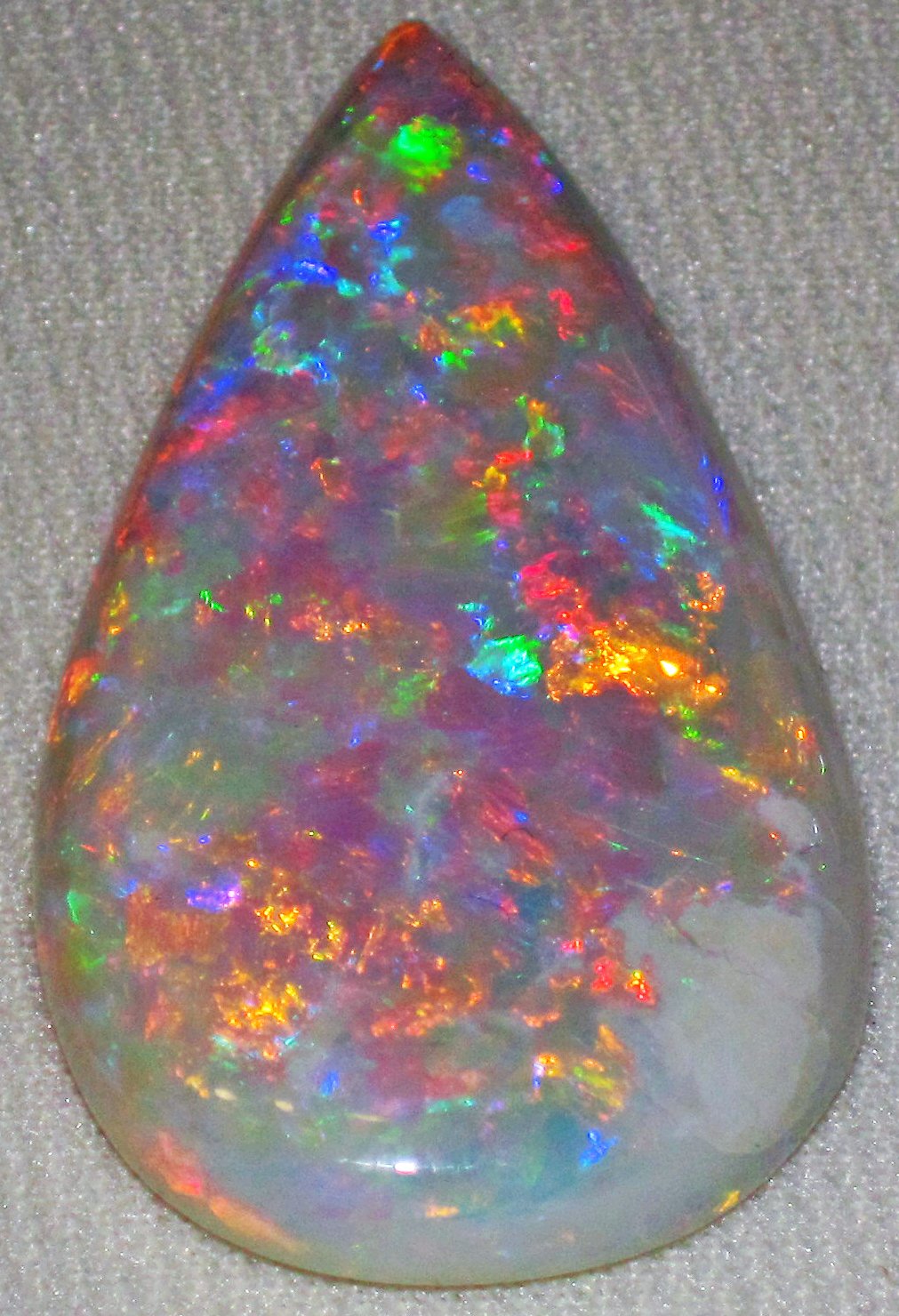
Opal isn’t just another gemstone — it’s a miracle of nature. Unlike diamonds or sapphires, opal is formed from tiny spheres of silica, which stack together and diffract light, creating breathtaking flashes of color. This play of color, called opalescence, is what makes opal so mesmerizing. In Australia, these gems are found in the very rocks where fossils are discovered, leading to the astonishing sight of ancient bones and shells shimmering with electric blues, fiery reds, and bright greens. The beauty of opal has made it highly prized for centuries, but when it wraps around the remains of a prehistoric creature, it becomes something truly unique: a fusion of natural history and natural artistry.
How Do Fossils Become Opals?
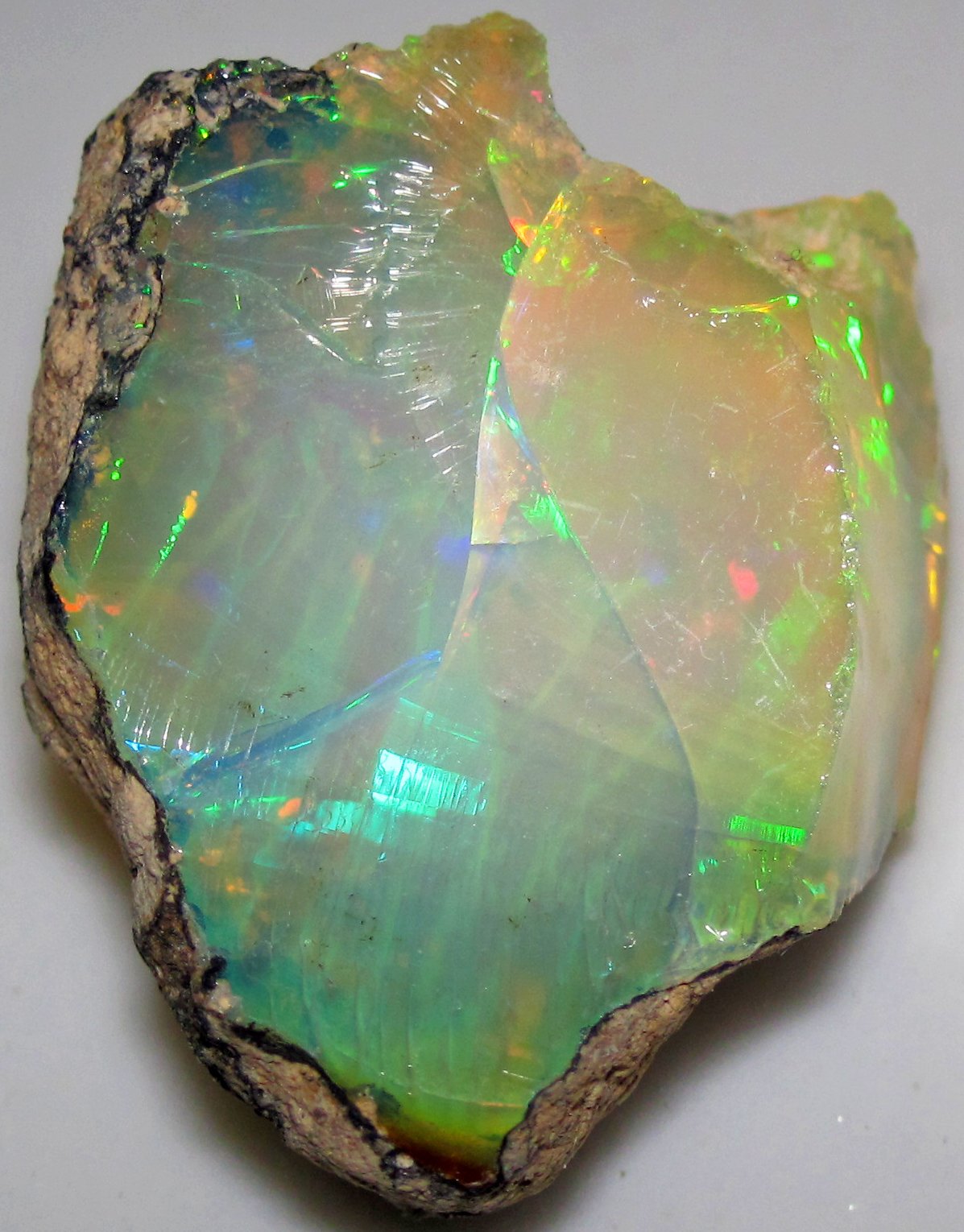
The journey from bone to gemstone is a story millions of years in the making. After a plant or animal died in ancient Australia, it might have been quickly buried by sediment, protecting it from decay. Over time, water rich in silica seeped through the ground, slowly replacing the organic material with minerals — a process known as permineralization. In regions with the right chemistry, instead of turning into stone, the fossils became encased in opal as the silica-rich water filled every tiny space. The result is breathtaking: dinosaur bones, turtle shells, and even ancient leaves preserved forever in glowing, iridescent opal.
Lightning Ridge: Home of the Opal Dinosaurs
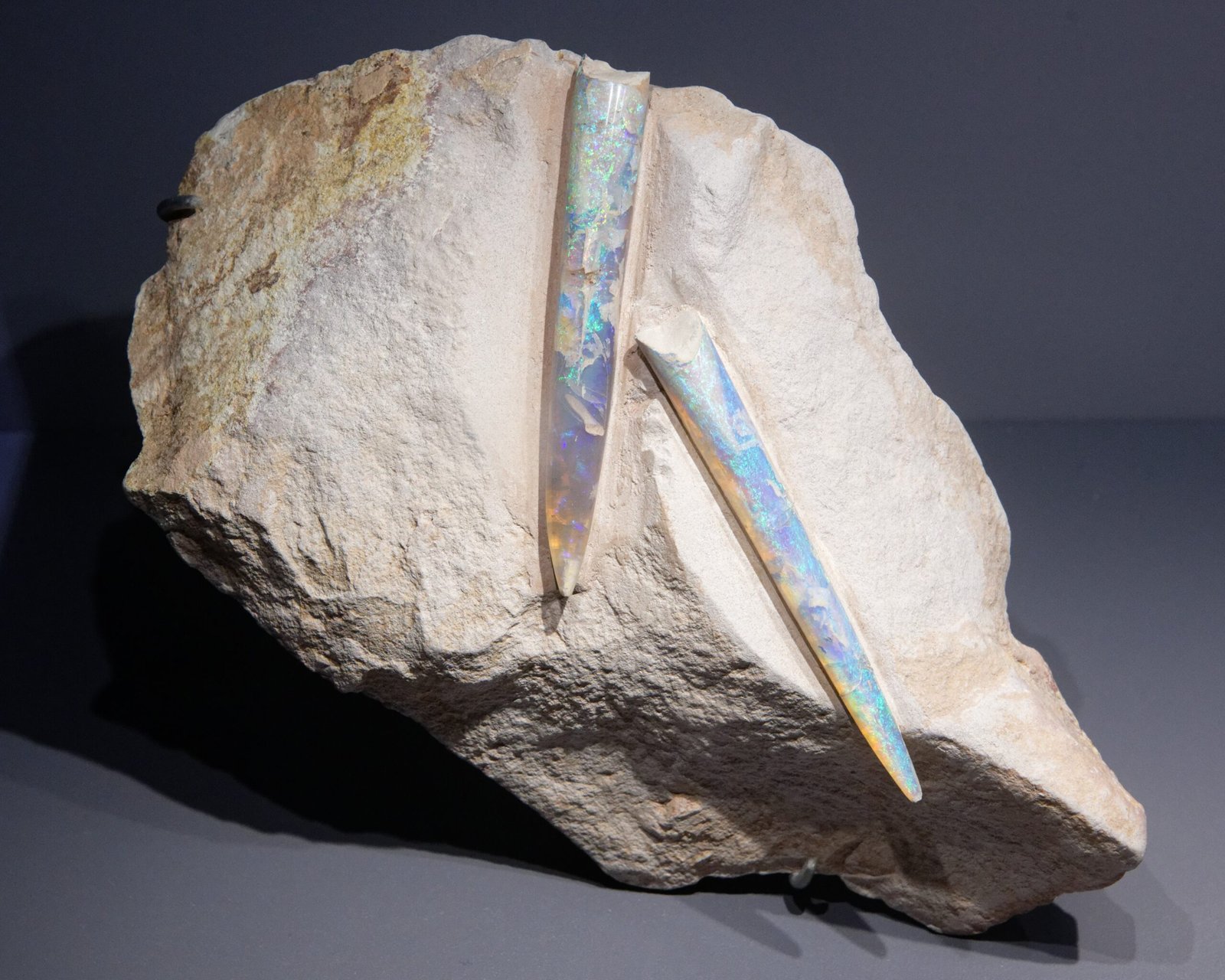
Lightning Ridge is more than just an outback town — it’s the world’s most famous source of black opal and the only place where opalized dinosaur fossils have been found. Here, miners have unearthed everything from tiny prehistoric fish to the bones of mighty dinosaurs, all transformed into sparkling gems. The most famous find is the opalized remains of a small dinosaur called Weewarrasaurus, whose fossils gleam with colors as vibrant as any jewelry. Stories abound of miners discovering a glint of color in the dirt, only to realize they’re holding a piece of prehistoric life frozen in time and light.
Coober Pedy: The Underground City with Ancient Jewels
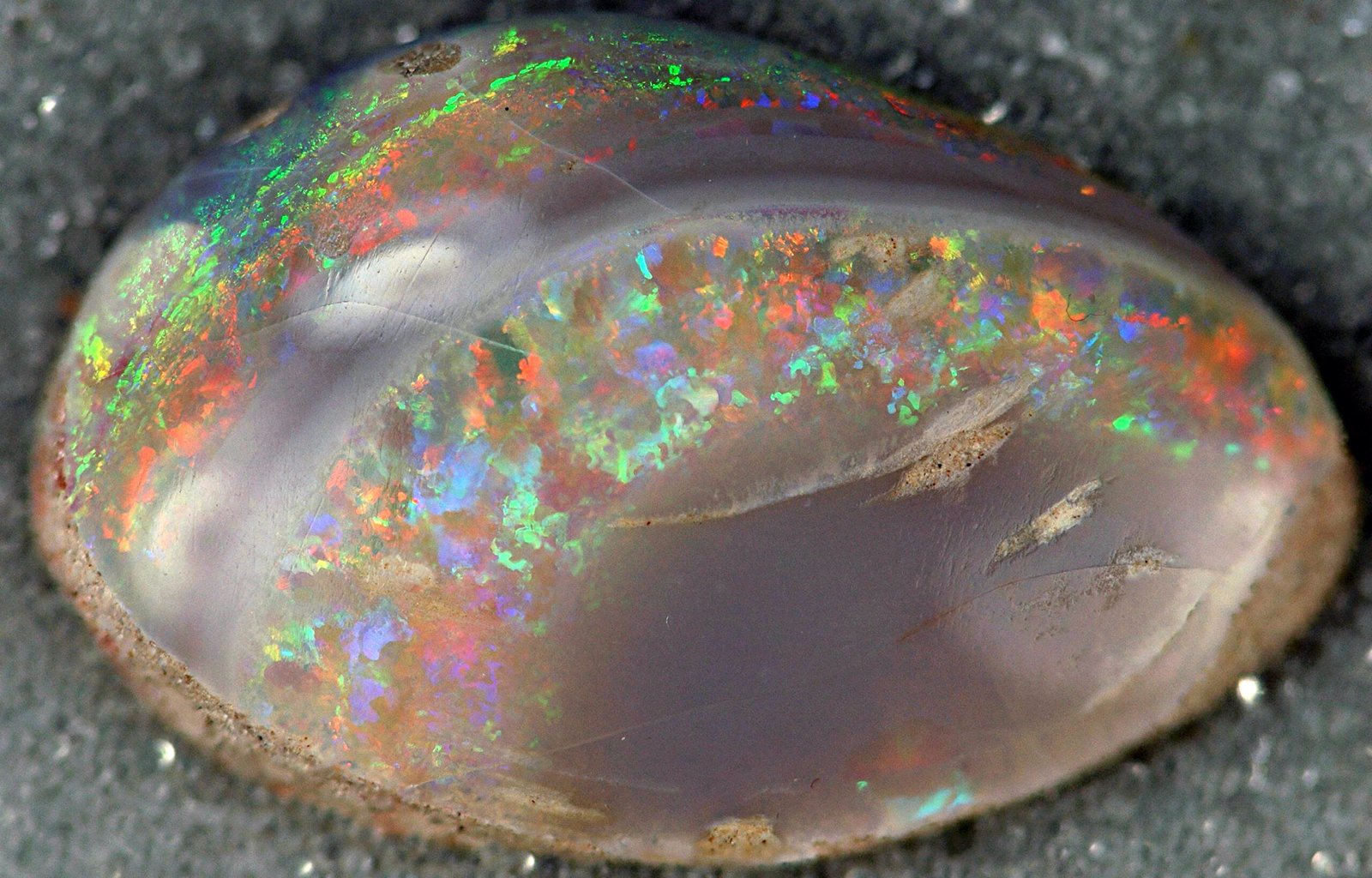
Coober Pedy is another legendary opal town, where the blistering heat drives people to live underground, and the earth conceals treasures from the dawn of time. Miners here have uncovered opalized shells, marine reptiles, and even tiny plants, all preserved in a kaleidoscope of color. The city’s tunnels echo with tales of fossil discoveries, adding a sense of adventure and wonder to everyday life. Walking through Coober Pedy feels like wandering through a living museum, where every rock could be hiding an ancient, sparkling secret.
Prehistoric Creatures Turned to Gemstones
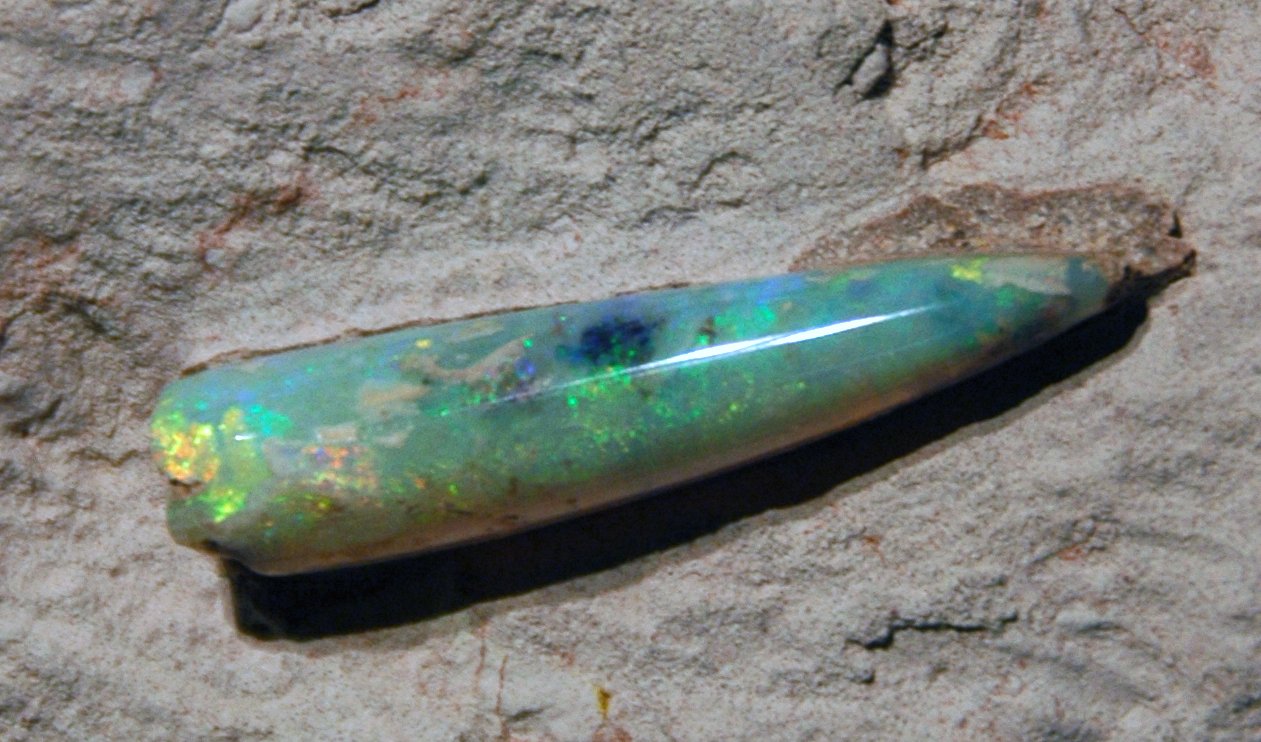
Australia’s opal fields have revealed an astonishing variety of fossilized life. From the delicate shells of Cretaceous mollusks to massive dinosaur bones, the region’s fossils tell the story of an ancient inland sea teeming with life. Some of the most spectacular finds include opalized teeth from marine reptiles known as plesiosaurs, shimmering fish skeletons, and even the fossilized droppings (coprolites) of long-extinct animals, all ablaze with color. Each discovery is a window into a vanished world, made even more magical by its brilliant transformation into gemstone.
The Science of Opalization
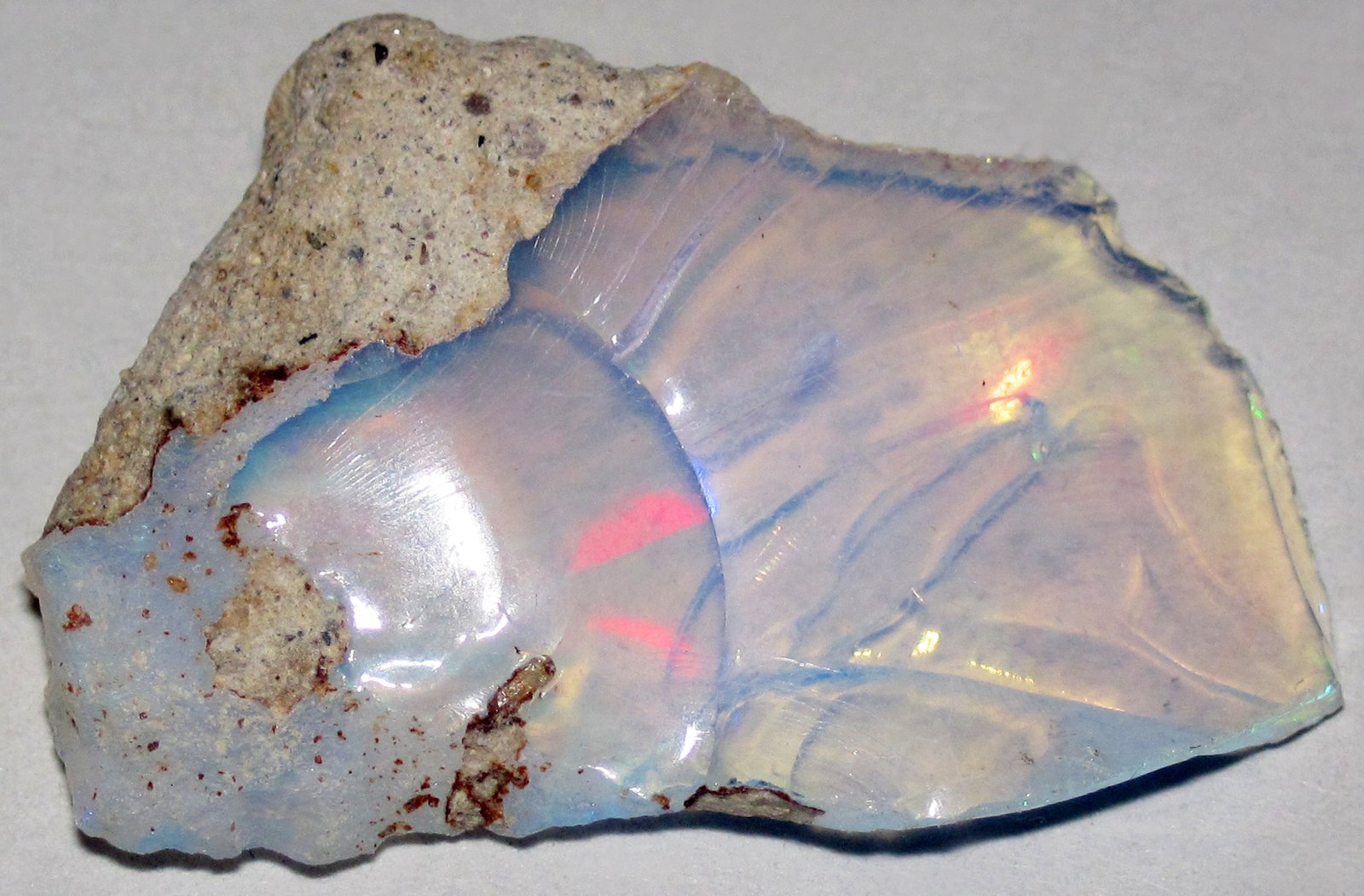
Opalization is a rare process that requires a perfect balance of geology, chemistry, and time. After the death of an organism, it must be buried quickly to avoid decay. Next, the surrounding rocks need to be rich in silica and experience just the right amount of water movement. Over millions of years, the silica slowly replaces the fossil’s original material, crystallizing into opal. Scientists still debate exactly why Australia’s conditions are so perfect for this process, but it’s clear that the continent’s unique history — from ancient seas to modern deserts — played a crucial role in creating these natural wonders.
Why Only Australia?
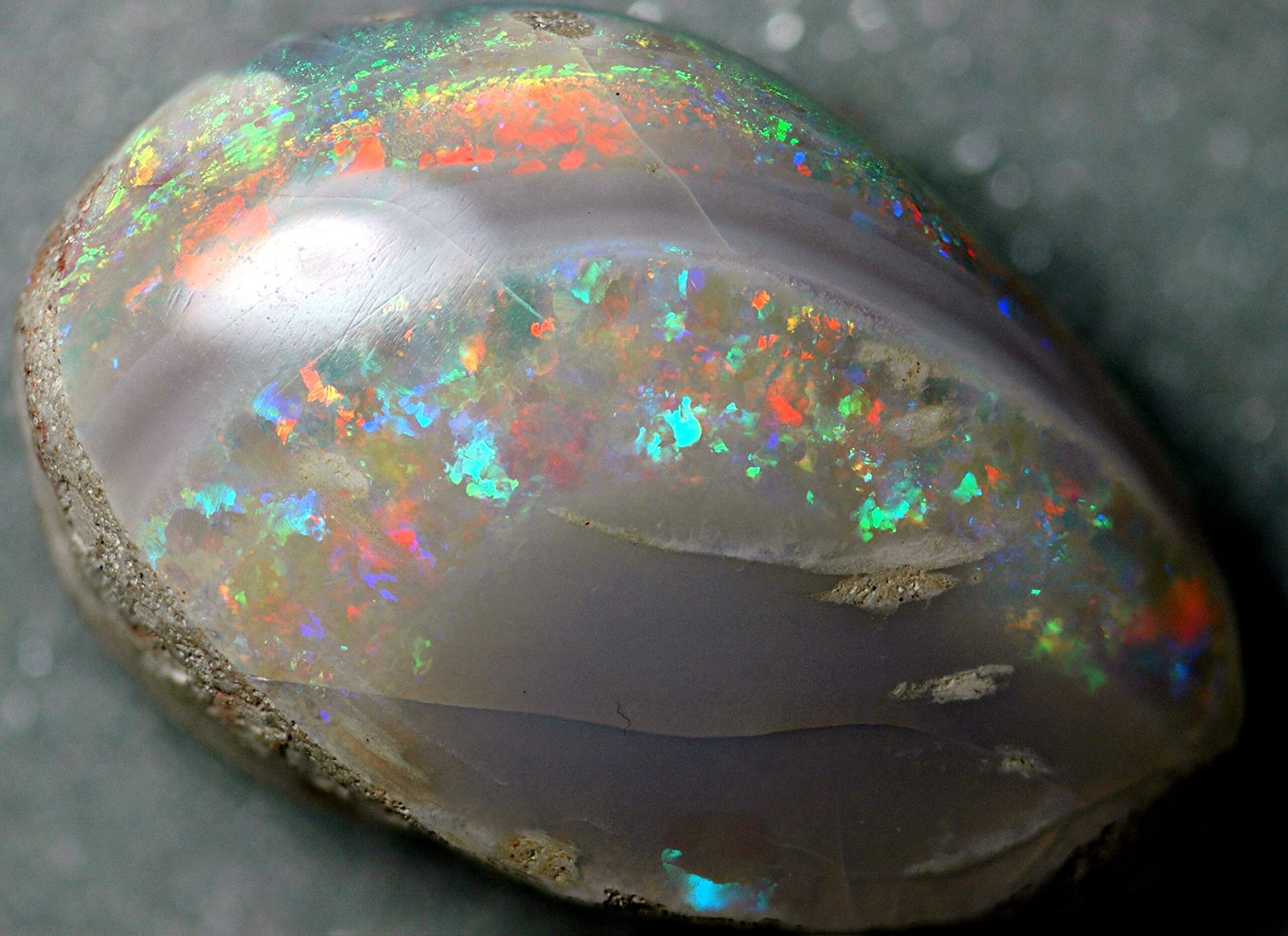
The question of why opalized fossils are mainly found in Australia has fascinated scientists for decades. The answer lies in the continent’s unusual geological past. Around 100 million years ago, much of central Australia was covered by a vast, shallow sea. As the sea dried up and the land became arid, it left behind silica-rich sediments — the key ingredient for opal. Very few other places in the world have the same combination of ancient seas, silica deposits, and stable geology, making Australia the ultimate treasure chest for opalized fossils.
The Magic of Opal Fossils: More Than Just Pretty Rocks
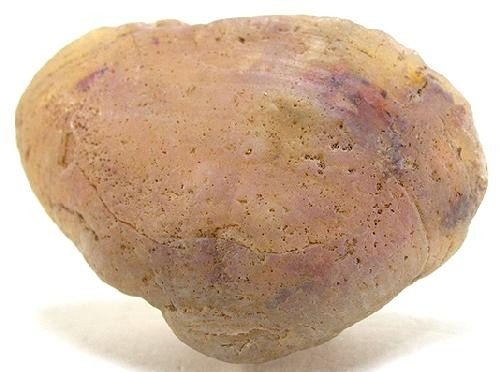
There’s something deeply moving about holding an opalized fossil in your hand. It’s not just a relic from a lost world — it’s a piece of ancient life, transformed by time into something beautiful and almost magical. These fossils bridge the gap between art and science, history and wonder. Museums display them as both scientific specimens and works of natural art, inspiring awe in all who see them. For many, they serve as a reminder of the incredible creativity of nature, and of the hidden stories waiting to be discovered beneath our feet.
Australia’s Opal Fossils in Modern Culture
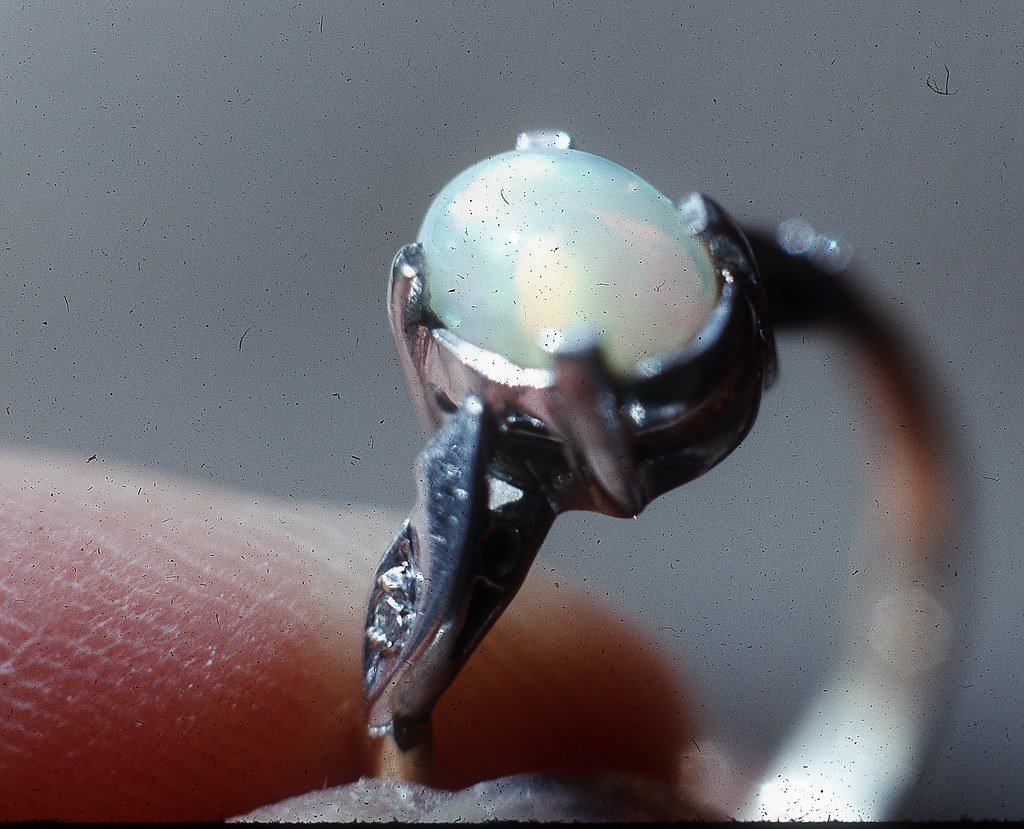
The allure of opalized fossils stretches far beyond the scientific community. Jewelry designers sometimes incorporate small opalized shells or bones into their pieces, creating wearable links to the distant past. Artists and writers are inspired by their beauty and mystery, weaving them into paintings, stories, and even films. For Indigenous Australians, opals carry deep cultural meaning, representing ancestral stories and connections to the land. The magic of these fossils continues to spark the imagination of people around the world, blending science, culture, and creativity in a way few discoveries can.
Opal Fossils: Nature’s Time Capsules
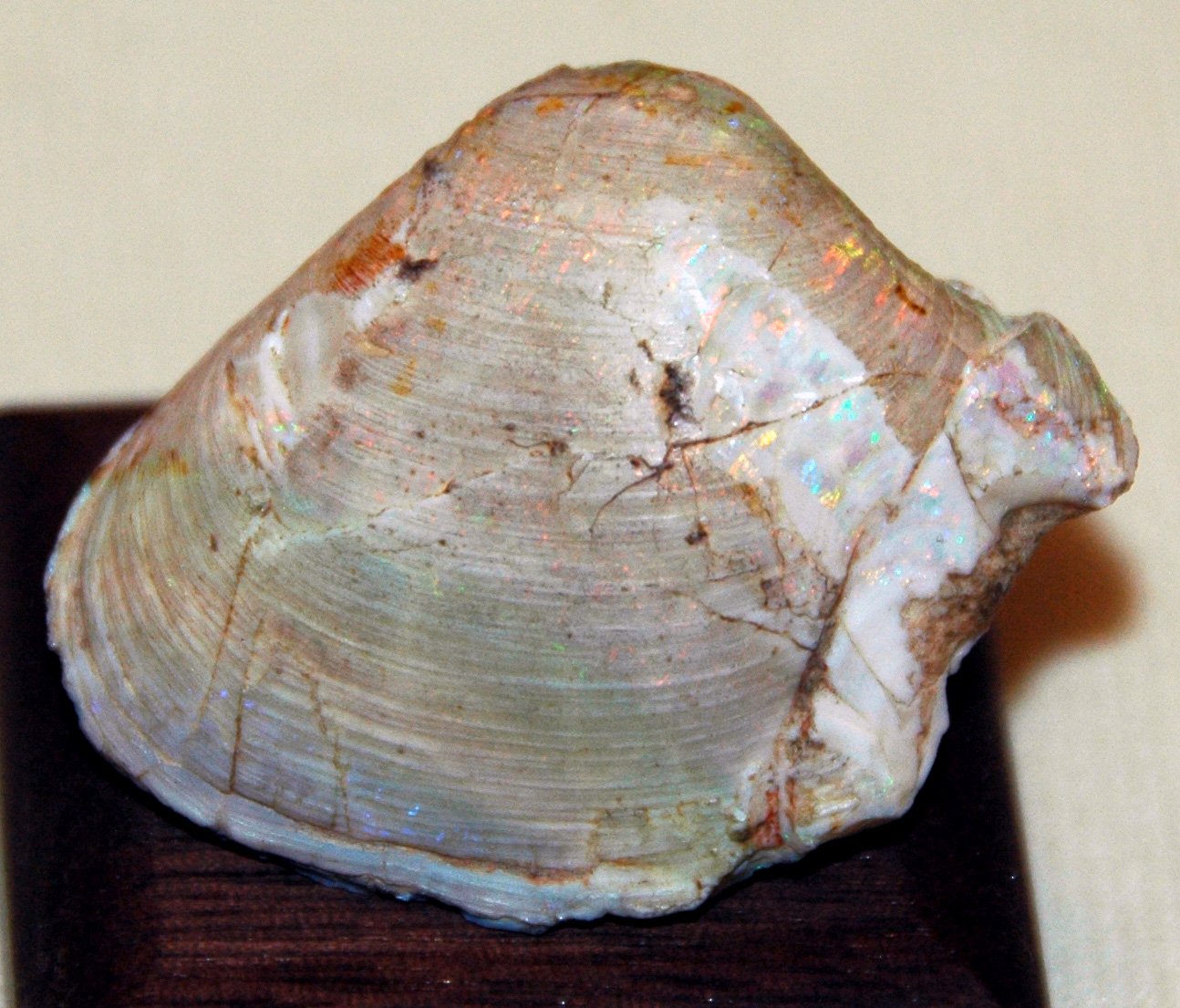
Every opalized fossil is a time capsule, preserving not just the form of an ancient creature but a snapshot of the world it lived in. When scientists study these fossils, they learn about prehistoric climates, environments, and ecosystems. The colors and patterns within the opal even hold clues to the chemistry of ancient waters. Each discovery adds a new piece to the puzzle of Earth’s history, helping us understand how life evolved and adapted through the ages. These fossils are more than just beautiful objects — they are keys to our planet’s deepest mysteries.
What Lies Beneath: The Ongoing Hunt for Prehistoric Bling
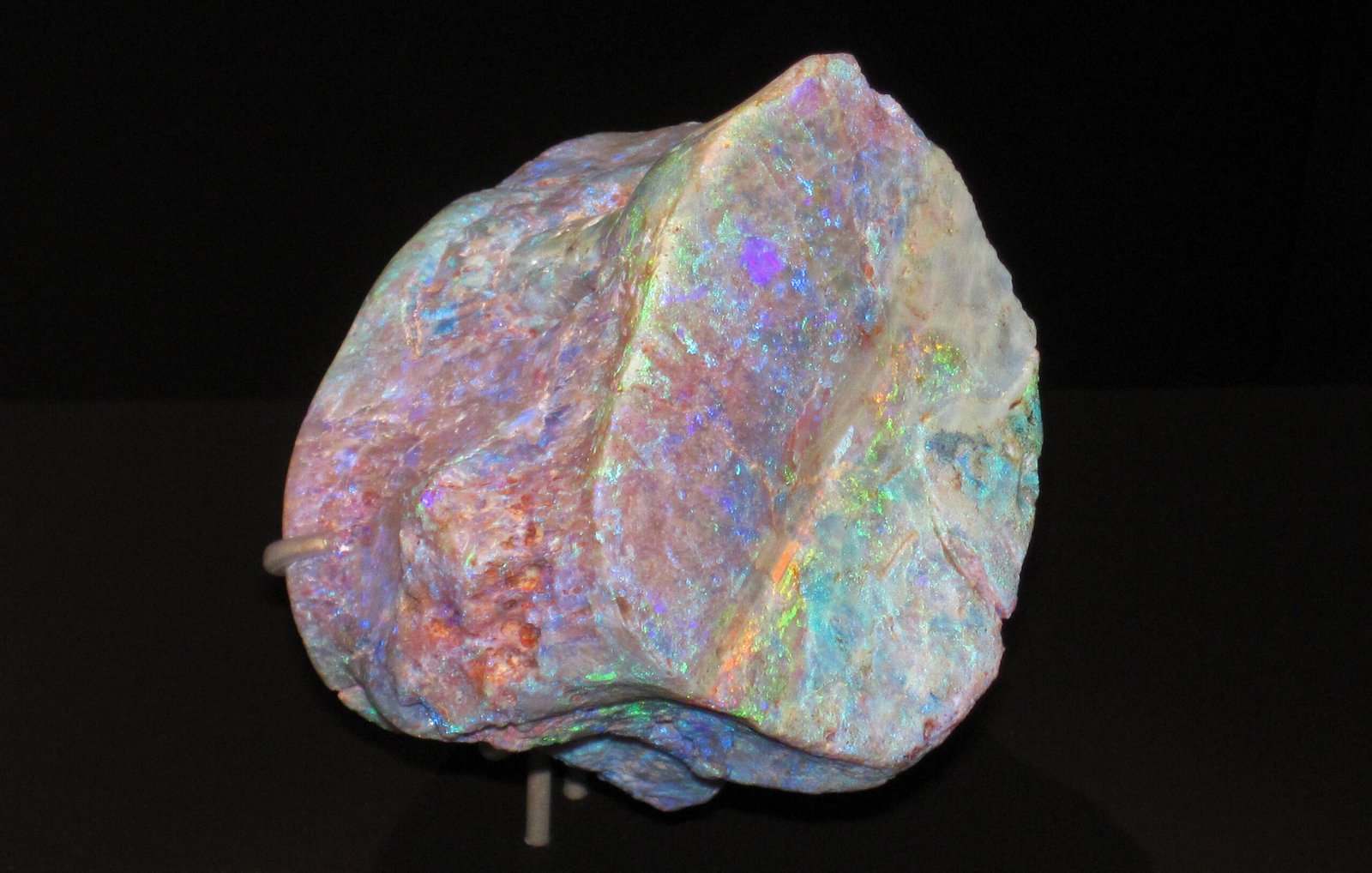
The search for opalized fossils is far from over. Every year, miners and paleontologists unearth new wonders in the Australian outback, each more dazzling than the last. With modern technology like 3D scanning and CT imaging, scientists can now study these fossils in incredible detail without damaging them. The excitement of discovery fuels both scientific research and popular fascination, ensuring that Australia’s prehistoric bling will continue to captivate us for generations to come.



